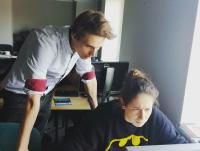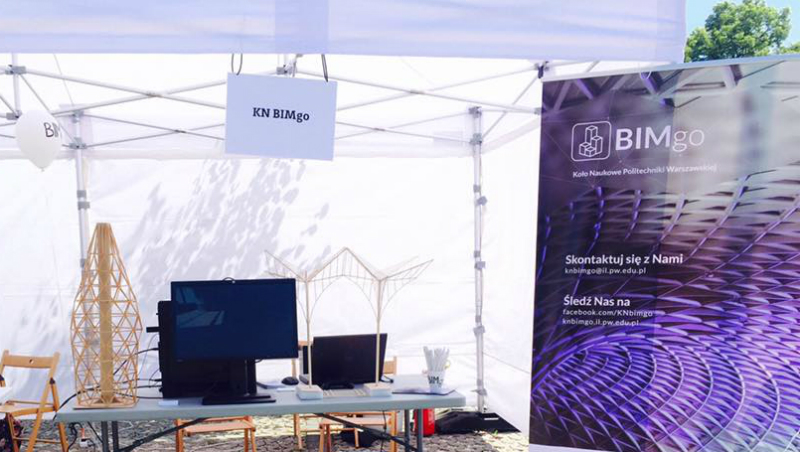Building faster, more cheaply and without mistakes
New technologies are not commonly used in the construction industry yet, but students from the BIMgo Student Research Group, which operates within the Faculty of Civil Engineering at the Warsaw University of Technology, want to change this. They use their knowledge and passion to develop a non-standard model of a non-standard energy-efficient single-family house.
“At a construction trade fair, we met representatives of the Solace company, who offered to work with us,” Michał Nowakowski says. “They turned to us because they had not found anybody who would present them with a sufficiently detailed model of the planned building. The house, which is expected to be built soon, will have a floor area of 48 sq. m. It will be built from prefabricated elements, which will be delivered in one container. The assembly will be fast and cheap. “The house has been designed as a zero-energy, or even a positive-energy building,” Krzysztof Kaczor explains. “The solution is addressed mainly to the poor.”
It has to be perfect
Our students use the possibilities offered by the BIM (Building Information Modeling) technology in their work. “It all started with classes on the Revit software, taught by Ireneusz Czmoch, Ph.D. Eng.,” Krzysztof Kaczor says. “As it is a very interesting and increasingly popular topic, we decided to establish a student research group.” Compared to standard methods, BIM makes it easier and faster to plan the construction project, find defects in the design, analyze the costs, material quantities and delivery time.
“Technology has advanced so much that we are no longer talking about 3D models, but about 7D models,” Krzysztof Rasz says. “They comprise a model, work schedule, information about costs, energy analysis and information about the building, such as overhauls and documentation of all items of equipment (warranties, manufacturers, and agreements with them). An advantage offered by BIM is that all information necessary for efficient administration of the building is gathered in one place. The project owner does not need a cabinet to store all the necessary documents – just a CD with the model.” “If we ‘move’ a wall in the model, the relevant changes are introduced automatically in the drawing, we don’t have to open many files and make adjustments,” Michał Nowakowski says. “Such documentation is coherent, which reduces the number of errors at the construction stage.” This is particularly important for such projects as an energy-efficient house, where all elements have to be manufactured flawlessly.
“Thanks to Revit extensions, such as Dynamo, we can program algorithms that will, for example, assign names to all elements in the model or add extra reinforcement around openings,” Krzysztof Rasz adds. “Programming allows us to save hours of clicking that would be necessary in the case of standard 2D documentation.” The house modeled by members of the BIMgo research group should be ready for use in different climate zones. This is another challenge our students have to face. “When our model is ready, we will parameterize it, so that we can enter data related to a given region, such as temperature or humidity, and obtain information how specific elements of the structure, e.g. wall thickness, should be modified,” Michał Nowakowski explains.
Catching up with the West
Our students point out that now the preparation of such building models takes more time than preparing standard documentation, but it will save time significantly once they become proficient. A problem is that not many companies and public institutions in Poland accept such modern materials about to-be-constructed buildings. The law does not keep up with the changes, either. Costs are another barrier, especially when it comes to purchasing necessary software licenses. Students from the BIMgo Research Group, however, are full of enthusiasm. “New technologies are still a novelty in the construction industry, but they are used here and there,” Krzysztof Kaczor says. “We want to follow the path that has already been taken in the West.”
Agnieszka Kapela
Office for Promotion and Information








